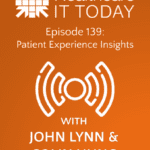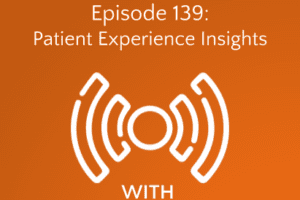 The following is a guest article by Jim Larrison, Co-Founder & CCO at Firstup
The following is a guest article by Jim Larrison, Co-Founder & CCO at Firstup
Three years after the start of the pandemic, nurses are beyond burnt out. Despite being hailed as “healthcare heroes,” nurses feel overworked, underpaid and under-appreciated. Nurse retention and recruitment is increasingly difficult for health organizations across the country.
According to a recent survey by Jarrard Inc., the nation’s leading healthcare communication firm, only a quarter of the nurses surveyed felt very satisfied with their job and just over one in four are satisfied with their pay. Higher pay and more staffing are, of course, key solutions to improve retention rates. However, many hospital systems are also experiencing financial challenges and are looking for additional ways to keep nurses happy and mitigate burnout.
In today’s healthcare environment, it is also essential to improve communication strategies to create a positive work culture that retains nursing staff. Intelligent communication is one important tactic for fostering a sense of community and improving nurse engagement.
Nurse Engagement is Not One-Size-Fits-All
The same one-size-fits-all approach to communication, engagement, and recognition programs is no longer enough to connect with nurses. Communication must meet nurses where they are, foster a two-way dialogue, and be delivered in a way that resonates.
Lehigh Valley Health Network (LHVN) revolutionized its employee experience with a new platform – LVHN Insider – which included an app, website and email engine. LVHN Insider aims to deliver the latest news and updates to colleagues in a convenient and accessible way, wherever they are and whenever they want it.
The platform connects all the necessary components on the back end for delivering and measuring communication to employees. On the front end, the platform allows LVHN to personalize content based on location, employee group, or hospital campus so LVHN can ensure that employees receive relevant information. The platform also allows for comprehensive sharing of important news and tracks engagement data, which the communications team can use to refine their strategy. Instead of relying on assumptions, LVHN can make communication decisions based on data and metrics.
Hawai’i Pacific Health (HPH), the largest healthcare provider in the state, needed a way to quickly communicate with staff working long 12-hour shifts in a fast and mobile way. After struggling to reach employees and medical staff in multiple locations with policies and protocols changing hour by hour, they implemented a new platform that allowed for the delivery of mobile notifications, with daily COVID bulletins, PPE information, and return-to-work guidelines being sent out regularly. This proved particularly helpful for both remote staff and frontline workers, who often spent hours on their feet.
Trust is Highest at the Ground Level
Nursing staff tend to place more trust in individuals they interact with regularly, such as colleagues and managers. In the same Jarrad, Inc. survey mentioned earlier, respondents named “my direct manager” as the most trusted with CEOs taking last place – even more so among nurses dissatisfied with their pay. Less than half of the nurses that respond believe that their organization effectively cascades information down from leadership to staff – which can ultimately erode trust. Often, face-to-face communication is the most effective form of cascading information.
Knowing that its staff wanted to hear from their direct managers, LVHN implemented a biweekly wrap-up email called “So No One Misses It” that is sent only to leaders with direct reports. The email condenses the most important stories, information, or updates from the past two weeks into two or three bullet points, making it easy for leaders to cascade the information to their teams. The message is available in PDF format at the bottom of each email, allowing leaders to easily share it at department huddles or staff meetings.
Hawai’i Pacific Health also wanted to launch a number of wellbeing initiatives, offering mindfulness and meditation opportunities and a wellbeing podcast, in which two HPH employees share stories and conversations from frontline workers across the community. With their intelligent communication platform in place, employees now learn about company news, hear inspirational stories from co-workers, and hear directly from leaders in a fast, mobile method through text messages, emails, and authentic video messages.
Building Community Boosts Morale
At LVHN, leadership found that culture, community, and connection were key to nurse retention. Building relationships with peers and engaging with what’s happening at the hospital were crucial to fostering connection.
The LVHN Insider platform allowed the nursing staff to actively participate in communication initiatives that fostered community and boosted morale. The platform offered the opportunity for everyone on staff to have a voice – not just the communication team. Staff could create content, comment on posts, and participate in polls and surveys – similar to a social media platform. The platform also enables colleagues to participate in recruiting efforts and receive recognition and appreciation from leadership.
As another example, the team at Boston Children’s Hospital knew the value of storytelling to unite a community. Leadership and colleagues have long shared meaningful stories to inspire the 16,000 hospital employees. But without an intelligent communication platform that easily enabled employee-generated content, some of the most powerful stories were not being told. Scope 360, the hospital’s intelligent communication platform includes tools for employees to tell their own stories and help the hospital share its story. By giving employees a platform to share their stories, the hospital showcases the human side of its operations, builds connections with its audience, and strengthens its brand identity.
Communication is Crucial to Retention
According to the Jarrad, Inc. survey, “fewer than half of nurses think their organization is effective at cascading information.” These findings show that there is significant opportunity for health systems overall to improve communication with nursing staff. Effective communication is critical for complex adaptive systems like healthcare. Having clear communication channels, understanding the audience, being concise and providing feedback can help an organization build trust and foster effective relationships with staff.
In healthcare, most employees don’t have a computer dedicated to, or readily available for, internal communication. For example, Nebraska Medicine needed a better communication delivery system that could reach a broad spectrum of roles with information that was not dependent on email. Leadership knew they needed a true omnichannel approach to communication and implemented a new complete digital employee experience platform that would help them address the unique challenges of their dispersed frontline workforce.
Their new intelligent communication platform also provides access to unified analytics which helps their leadership team be more strategic and see what’s working and what’s not. This type of two-way communication is also helpful for employee retention. Managers and teams can quickly see which employee segments aren’t engaging or might require different levels of communication to feel empowered. To dig even deeper, they have plans to measure the impact of the new communication platform on their existing employee engagement surveys, with the belief that this type of feedback can help strengthen the relationship between managers and employees as well as other cross-functional teams in the organization.
In Conclusion
Healthcare organizations must implement effective communication strategies that foster a sense of community, promote engagement, and meet the unique needs of nursing staff. Organizations must utilize technology and data to inform their communication strategies and meet nursing staff with the right information, in the right place, at the right time. By adopting these strategies, healthcare organizations can retain their nursing staff, promote engagement, and thus deliver the highest-quality care to their patients.













